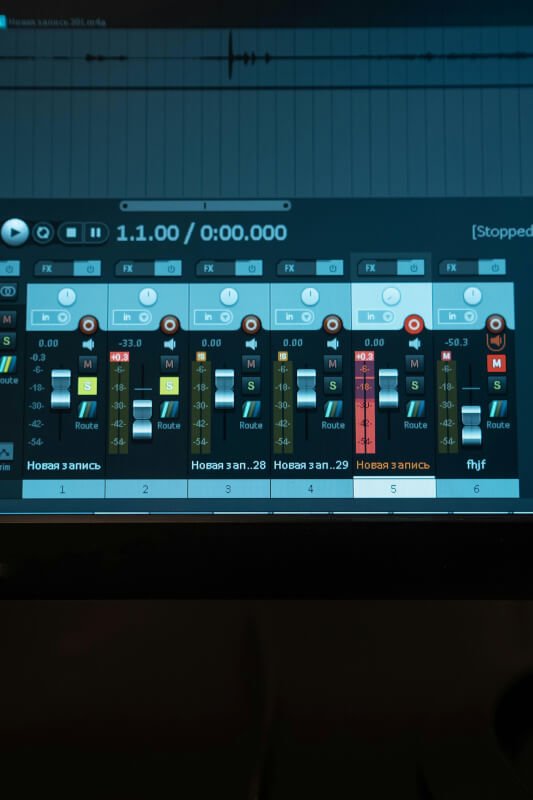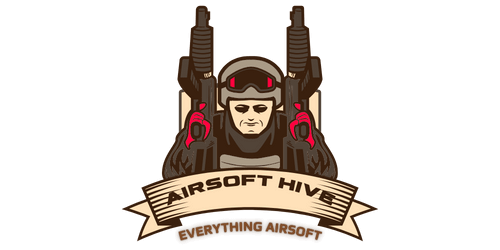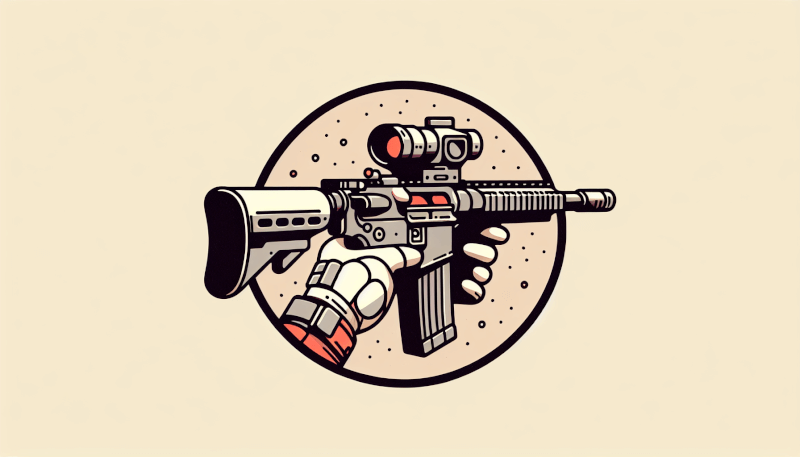Are you ready to take your airsoft game to the next level? Communication is key when it comes to strategizing with your team, and utilizing sound and visual signals can greatly enhance your coordination on the field. In this article, we will explore the best ways to effectively use airsoft sound and visual signals to improve your gameplay and ensure seamless communication with your teammates. From hand signals to whistle codes, get ready to elevate your airsoft experience with these expert tips and techniques.

Importance of Communication in Airsoft
Airsoft is a team-based sport that requires effective communication for successful gameplay. In the heat of battle, clear and efficient communication can mean the difference between victory and defeat. This article will explore the importance of communication in airsoft and how sound and visual signals play a crucial role in enhancing communication on the battlefield.
Effective communication in airsoft
Communication is at the core of any team-based activity, and airsoft is no exception. In an airsoft game, the ability to effectively convey information to your teammates can be a game-changer. Whether it’s sharing enemy positions, coordinating strategies, or providing critical updates, communication ensures that everyone is on the same page and working towards a common goal.
Role of sound and visual signals in communication
Sound and visual signals are two key elements that contribute significantly to effective communication in airsoft. These signals supplement verbal communication, especially in situations where speaking might not be feasible or might compromise a player’s position. By understanding and utilizing sound and visual signals, players can enhance their communication capabilities and gain a competitive edge on the field.
Understanding Airsoft Sound Signals
Types of sound signals used in airsoft
In airsoft, various sound signals are employed to convey specific messages and instructions swiftly and discreetly. These signals can range from basic to complex, each serving a unique purpose. Examples of commonly used sound signals in airsoft include whistles, clicks, claps, and even specific words or phrases that have been designated as signals within a team. It’s important for every player to familiarize themselves with these signals to ensure effective communication during gameplay.
Importance of sound signals in communication
Sound signals play a crucial role in airsoft communication due to their ability to convey messages rapidly and covertly. They can be used to alert teammates to specific situations, such as the presence of enemies, the need for immediate action, or even to coordinate movements and strategies. Sound signals can be particularly useful in situations with limited visibility or when silence is required to maintain a tactical advantage. By understanding and utilizing sound signals effectively, players can enhance their communication and maintain a tactical edge on the battlefield.

Utilizing Airsoft Sound Signals
Recognizing different sound signals
Recognizing and understanding different sound signals is essential for effective communication in airsoft. Players should familiarize themselves with the various sound signals used by their team before participating in games. This can be achieved through training sessions, where specific sounds are explained and practiced to ensure that everyone is on the same page. Additionally, players can learn from experienced teammates and observe how sound signals are used during gameplay.
Creating distinct sound signals
In addition to recognizing sound signals, players can also contribute by creating distinct sound signals that are unique to their team. These signals should be agreed upon and practiced before being implemented in gameplay. By creating distinct sound signals, teams can maintain a level of secrecy and prevent opponents from deciphering their communication. It is essential to choose sounds that are easily recognizable and not easily mistaken for other sounds commonly heard on the field.
Best Practices for Visual Signals in Airsoft
Types of visual signals in airsoft
Visual signals are another essential aspect of communication in airsoft. They provide a means of conveying messages or commands through visual cues rather than relying solely on verbal or sound communication. Visual signals can include hand gestures, flags, smoke signals, or even specific colors worn on clothing or equipment. Each visual signal serves a specific purpose and is easily understood by teammates who are familiar with them.
Benefits of visual signals
Visual signals offer several advantages in airsoft communication. Firstly, they can be seen from a distance, making them especially valuable in situations where verbal or sound communication might not reach all teammates effectively. Visual signals are also useful in low-light conditions or when visibility is compromised due to smoke or terrain. Additionally, visual signals can be more covert than sound signals, allowing teams to communicate silently and without alerting enemies to their presence.

Using Visual Signals for Communication
Creating clear and recognizable visual signals
To effectively use visual signals in airsoft communication, it is crucial to create signals that are clear, easily recognizable, and understood by all teammates. Consistency is key, and everyone in the team should be trained to understand and respond to the visual signals used. It’s also important to consider the environment in which the signals will be used and ensure that they stand out against the background. Well-designed and practiced visual signals can significantly enhance communication and coordination on the airsoft battlefield.
Signaling in different scenarios
Visual signals can be utilized in a variety of scenarios during airsoft gameplay. From indicating the presence of enemies to requesting assistance or designating a specific area for focus, visual signals can help teams quickly relay crucial information. They can also be used to coordinate movements, direct teammates to specific locations, or communicate changes in plans. By utilizing visual signals effectively, teams can react swiftly and efficiently to changing situations, ultimately increasing their chances of success.
Combining Sound and Visual Signals
Advantages of combining sound and visual signals
While both sound and visual signals are effective methods of communication on their own, combining the two can amplify the effectiveness of communication in airsoft. By utilizing both sound and visual signals simultaneously, teams can ensure that messages are received and understood by all members, regardless of their position on the field or the environmental conditions. This dual approach increases the overall reliability and efficiency of communication, improving team coordination and situational awareness.
Improving communication efficiency
By combining sound and visual signals, teams can significantly improve their communication efficiency on the airsoft field. Sound signals can alert teammates to the need for attention or immediate action, while visual signals can provide more specific information or instructions. This allows for quicker decision-making and the ability to adapt to rapidly changing situations. By consistently incorporating sound and visual signals into their communication strategies, players can maximize their team’s effectiveness on the battlefield.

Developing a Tactical Communication System
Establishing a communication hierarchy
To ensure effective communication within a team, it is important to establish a communication hierarchy. This hierarchy determines who has the authority to issue commands and who is responsible for relaying information to the rest of the team. By clearly defining roles and responsibilities, teams can avoid confusion and ensure that communication flows smoothly during gameplay. It is essential for all team members to understand and respect the communication hierarchy to maintain efficiency and unity on the field.
Setting up communication protocols
Beyond establishing a hierarchy, teams should also develop communication protocols that outline how information should be communicated and how responses or acknowledgments should be given. These protocols can include guidelines such as using specific language or codes, confirming receipt of information, and providing updates on the execution of commands. Having clear communication protocols in place ensures effective and efficient communication, minimizing the risk of misunderstandings or misinterpretations.
Training for Effective Communication
Importance of communication training
Communication is a skill that can be developed and honed through training. In the context of airsoft, it is crucial for players to undergo communication training to familiarize themselves with the various signals and protocols used by their team. Regular training sessions can help improve individual communication skills, as well as team coordination and synchronization. By investing time and effort into communication training, players can enhance their overall effectiveness on the airsoft field.
Building teamwork through communication
Effective communication not only improves gameplay but also strengthens the bond between teammates. By working together to develop and practice communication strategies, players develop a sense of trust and unity. Through effective communication, teammates can support and rely on each other, leading to improved teamwork and overall performance. Communication training acts as a catalyst for building stronger relationships within the team, ultimately contributing to a more successful airsoft experience.
Common Mistakes in Airsoft Communication
Lack of clarity in signals
One common mistake in airsoft communication is a lack of clarity in the signals used. If signals are not designed properly or not clearly understood by all team members, confusion can arise, leading to misinterpretation and potentially negative consequences. It is essential to ensure that signals are straightforward and easily recognizable, providing no room for ambiguity or confusion. Regular practice and feedback from teammates can help identify and rectify any issues with signal clarity.
Failure to adapt signals to different environments
Another common mistake is failing to adapt signals to different environments encountered during airsoft gameplay. Each environment presents unique challenges, such as noise levels, visibility, and terrain features, which can impact the effectiveness of signals. Failing to consider these factors and adjust communication strategies accordingly can hinder effective communication. It is important to periodically review and update communication protocols to address any shortcomings and ensure they remain effective in various scenarios.
Conclusion
Communication is a vital component of success in airsoft. The utilization of sound and visual signals enhances communication efficiency, ensuring that critical information is conveyed swiftly and discretely. By recognizing different sound signals and creating distinct signals of your own, you can improve communication on the field. Incorporating visual signals in different scenarios and combining them with sound signals further enhances communication effectiveness. Developing a tactical communication system and investing in communication training contribute to improved teamwork and overall performance. By avoiding common mistakes and continuously improving communication skills, you can maximize your effectiveness as an airsoft player. So remember, in airsoft, effective communication is key!
Word count: 1742 words.

